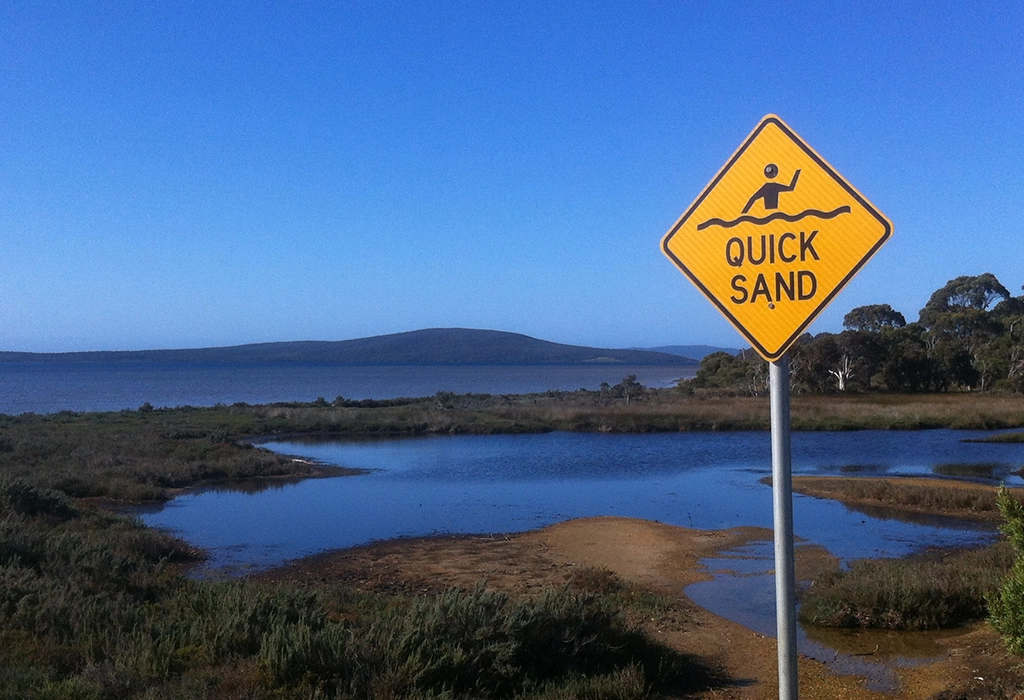As we all know, Quicksand is a mixture of sand and water. What sets it separated from your average cluster of sand is the sand grains’ shape and how they fit together.
In normal sand, grains are packed tightly together to form a rigid mass, with about 25 to 30 percent of the space (voids) between the grains filled with air or water.”
SciAm reports.
But if the sand’s shape is more extended than spheroidal, it can expand those gaps from 30 percent up to 70 percent.
This arrangement is similar to a house of cards in that the space between the cards is significantly greater than the space occupied by the cards.”
As per SciAm.
As a result, the sand looks stable on the surface but is very pressure sensitive and can easily tumble, driving the surface to fall beneath your feet. What makes quicksand so harmful is its thickness. Once disturbed, quicksand becomes much thicker, trapping whatever it encircles.
But wait..don’t ask anyone to pull you out from the Quicksand. They wouldn’t help you but only displace your top body because the pressure that needs to pull you out is the same pressure that is required to lift a small car.
If you have shoes on your feet then remove them and move your legs so it would help your legs to reduce the around them. If you are not deep in it then make Quicksand tougher to sink you by lying on your back.
If you don’t want to apply the above idea then instead of laying on your back lean forward and drag yourself free while gently kicking your legs.
Roll away from the quicksand once you reach the surface, and you should be apparent of the sticky situation.
Another tip is to never enter the quicksand part without a stick. You can rest the pole on the quicksand’s surface, relax your weight, and slowly shimmy your way out




